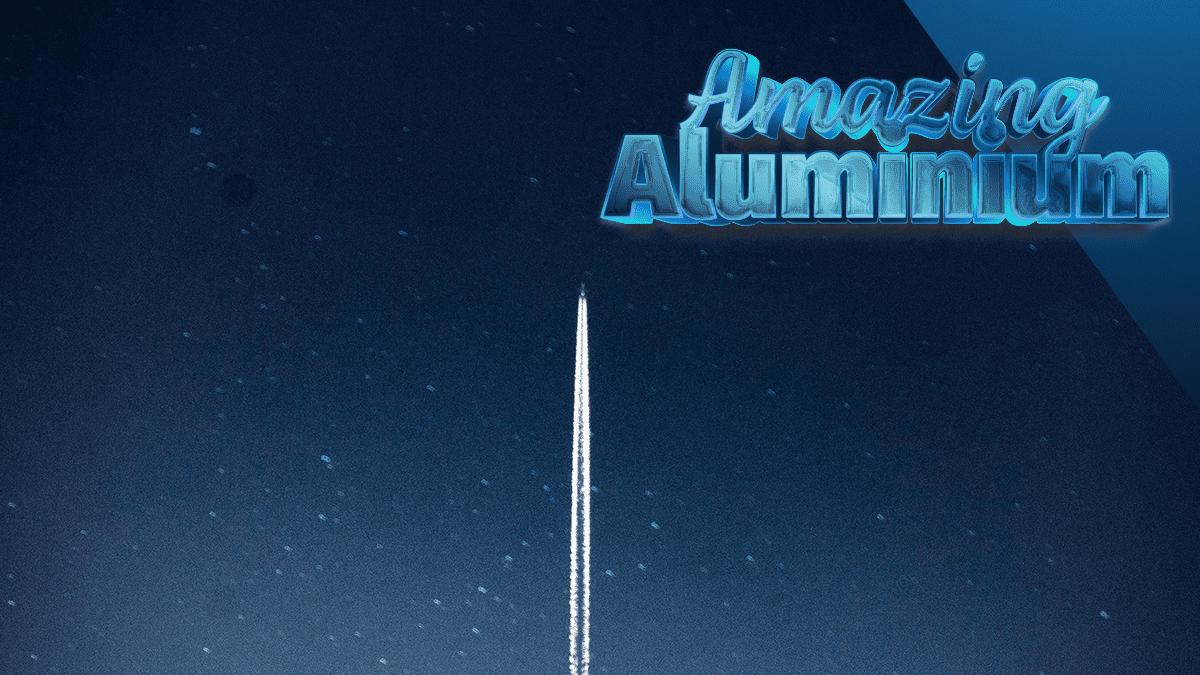As one of the world’s most abundant elements, aluminium is found in rocks, soil, vegetation and even in water.
As a metal, it is lightweight but strong and is easily cast or rolled to make complex shapes for a wide range of products – from greenhouses to skyscrapers.
And of course, aluminium is used to make food packaging – like foil trays and drink cans. It can also be recycled again and again with no loss of quality!
Did you know recycling just one aluminium drink can saves enough energy to power a lightbulb for a day…or a TV for THREE hours?

Some precious stones, like rubies and turquoise, have a form of aluminium in them. But extracting aluminium from them isn’t practical.
The most common source of aluminium is from a mineral called Bauxite. It’s commonly found in tropical areas near to the surface, and so is easier to mine than many metals.
After the Bauxite has been mined, it’s taken to refining plants where it’s mixed with water and chemicals, ground up and then treated with steam to form something called sodium aluminate.
Filters then take out the impurities, and after further chemical treatments, it’s washed and heated to high temperatures to boil off the water, creating aluminium oxide.
Aluminium oxide is aluminium combined with oxygen atoms. To remove the oxygen, electricity is used to break the aluminium away creating a pure metal that’s then formed into solid metal ingots.

The process is called electrolysis or electrolytic reduction and it’s a process that was discovered in the 19th Century by a Danish physicist called Hans Christian Orsted.
The process uses a lot of energy. 15 megawatts are needed to make a tonne of aluminium. That’s as much as 100 households use in a month.
Electricity is key in extracting aluminium, and that’s why aluminium smelting plants are often located near to power sources – especially renewable power.
It turns out the energy saved from recycling just one drink can is enough to boil four kettles!

Foil food trays, cans and aerosol containers are just a few types of packaging made of aluminium. Next time you’re at the shops, how many other forms of aluminium packaging can you find?
HOW IS ALUMINIUM PRODUCED?
The pure form of aluminium does not naturally occur in nature, so remained largely unknown until as recently as 200 years ago. Creating aluminium using electricity was first developed in 1886 and is still used to this day.
BAUXITE MINING
The aluminium production process starts with the mining of bauxite, an aluminium rich mineral in the form of aluminium hydroxide. About 90% of the global bauxite supply is found in tropical areas.
Embed from Getty ImagesALUMINA PRODUCTION
Bauxite is crushed, dried and ground in special mills where it is mixed with a small amount of water. This process produces a thick paste that is collected in special containers and heated with steam to remove most of the silicon present in bauxites.
Embed from Getty ImagesREDUCTION PROCESS
At an aluminium smelter, alumina is poured into special reduction cells with molten cryolite at 950℃. Electric currents are then induced in the mixture at 400 kA or above; this current breaks the bond between the aluminium and oxygen atoms resulting in liquid aluminium settling at the bottom of the reduction cell.
Embed from Getty ImagesPRIMARY ALUMINIUM
Primary aluminium is cast into ingots and shipped to customers or used in the production of aluminium alloys for various purposes.
Embed from Getty ImagesALUMINIUM ALLOYS
The process where the aluminium is mixed with other metals to give it its required properties. This process is used for making the vast majority of aluminium products from spectacle frames, drink cans, aeroplane fuselages or spaceship bodies.
Embed from Getty ImagesClick here for some amazing free aluminium education resources!
And remember to always recycle your aluminium – whether a drink can or foil tray, foil wrapping or bottle cap – always put your aluminium into your recycling. After all, aluminium is infinitely recyclable.
Add a commentAmazing Aluminium
Aluminium is amazing! It's so versatile. Find out all about how amazing aluminium is in our amazing series, Amazing Aluminium!
More From Amazing Aluminium






